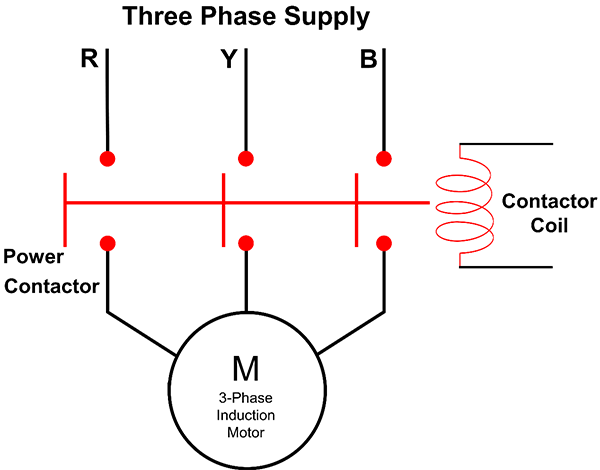Your Cart is Empty

Oil-Lubricated Rotary Screw Vacuum Pumps: What Applications Are Best & When You Need Fixed Speed vs VSD Technologies
Do you know if you need a fixed speed or VSD controlled vacuum pump for your specific application?
In this article, we discuss some of the applications best suited for an oil lubricated vacuum pump, when you would want to control your system with a variable speed drive, and break down the top 6 situations a fixed speed drive for an oil lubricated vacuum pump would be best.
Introduction
Oil lubricated, rotary screw vacuum pumps (shortened to “vacuum pump” for the rest of this article) have been around for many years and have provided a simple, reliable and efficient source of industrial vacuum for many industries worldwide.
When Is An Oil-Free Vacuum Pump Preferred Over Oil Lubricated?
It is important to know that processes which ingest liquids or condensing gasses that are incompatible with the lubricant are not recommended. Specialized filtration can be added to reduce or eliminate these contaminants, but the cost of adding this filtration system may encourage you to consider a different technology, such as an oil-free vacuum pump.
At Rogers Machinery, we strive to help you find the right vacuum solution for your specific application. If a Rogers KRVP oil lubricated vacuum pump isn’t the right solution for your application, our engineered solutions team specializes in creating the ideal Rogers Vacuum System (RVS) solution for your unique application.
The Addition of VSD’s For Energy Efficiency In Vacuum Pumps
Since their introduction, there have been many improvements to increase the efficiency of these workhorses of vacuum production. One of these improvements has been the introduction and adoption of variable speed drives (VSD) for the main motor. This improvement has become so prevalent in the oil lubricated rotary screw vacuum pump market, that there are some manufacturers who only sell VSD controlled oil lubricated rotary screw vacuum pumps.
However, just because it is the only product some manufacturers sell, doesn’t mean it is right for your application and environment. Let’s start with a little background into VSDs and then address what we consider poor applications of VSD compressors.
VSDs Can Also Be Called An Adjustable Speed Drive (ASD) or a Variable Frequency Drive (VFD).
A vacuum pump without a VSD controlled main motor would be called a fixed speed or constant speed vacuum pump. AC, induction motors have a base speed that is relative to the input power frequency and number of poles in the motor. On 60 Hz power, a motor with 4 poles operates at a nominal 1800 RPM. A motor with 2 poles on 60 Hz. power operates at 3600 RPM. This is important because when you couple a motor operating at a fixed speed to an oil lubricated rotary screw vacuum pump, the volumetric flow through the vacuum pump is also fixed.

Graphic 1: VSDs use 6 rectifiers, a DC bus and 6 IGBTs. The rectifiers and IGBTs can engage and disengage between 7000 and 15,000 times a minute.

Graphic 2: A cross the line starter utilizes a solenoid to create a mechanical path of the power to the motor. The solenoid is activated once at startup and then is deactivated to stop the motor.
In order to keep your vacuum system working effectively, you need to match the flow and vacuum requirements of the vacuum pump to the flow requirements of the system. Using a fixed speed vacuum pump, you can either:
- unload the vacuum pump, or
- operate the vacuum pump at the lowest vacuum level it attains and modulate the inlet or use a vacuum regulator to control the system pressure
It isn’t necessarily obvious, but this second option can be quite attractive in the world of vacuum because as your vacuum level drops the amount of power required actual goes down.
Why Would You Want To Control the Main Motor With A VSD?
The reason is because you can save more power with a VSD.
For example:
A 50 HP air compressor requires about 45 kW of power and when running 8000 hours a year with an electrical rate of 8 cents per kWh will cost $28,800 to operate. A system which requires approximately 50% of the output of a vacuum pump, will require about 80-90% of the power from a fixed speed vacuum pump (we will estimate 85% for comparison purposes). A VSD controlled vacuum pump would require approximately 50% of the power to produce 50% of the output. This leads to 35% in savings. That 35% savings translates into $10,080 over the year.

Graphic 3: Actual systems are never quite this easy a comparison, as process requirements are rarely constant. Work with your Rogers Machinery representative to map your actual system requirements and how they change by shift or day to quantify your savings potential.
Does that mean you should always buy a variable speed driven, oil lubricated rotary screw vacuum pump?
What Are The Advantages & Disadvantages of VSD vs Fixed-Speed Vacuum Pumps?

Or could you be putting a variable speed vacuum pump into a fixed speed application?
Situations We Would Suggest Are Fixed Speed Applications:
1- Hot and/or Dirty Environments

Image 4: Hot and dirty environments are not a good location for a VSD. Consider a fixed speed vacuum pump, special packaging or a remote mounted drive to lengthen VSD life in these environments.
Precise electronics do not like heat and dirt. If some dust gets into the wrong place, the VSD can short circuit and your vacuum pump will stop working. In addition, in order to dissipate the 3-5% of the total power that is generated by a VSD in heat, you need to have cool air and consistent air flow. Most VSDs have fans with filters that provide air flow to cool the VSD, but those aren’t as effective if the air is already hot and if the filters are plugged with dust. While Rogers Machinery can provide special packaging or a remote located VSD which can help prolong the VSD life, that isn’t an option with all manufacturers. If you don’t want to pay the extra cost for special packaging, a fixed speed unit may be the right choice.
Image 5: Dusty environments will cause VSD filters to plug prematurely, reducing airflow and causing premature failure.
2- No Redundancy or a Critical Application

It is always recommended to have redundancy in a vacuum or compressed air system. However, sometimes, that just isn’t possible or practical. A VSD controlled vacuum pump has the opportunity for power savings, but VSDs have approximately half the life expectancy of the other major components in your vacuum pump. In addition, VSDs typically don’t provide feedback before they fail catastrophically.
Typical motor or airend issues are preceded by heat or noise, which can allow a plan to be implemented before the unit actually fails. Critical applications may also not be candidates for VSD controlled vacuum pumps, where losing a VSD and shutting down your process can cause you to have to scrap a costly batch of product. Depending on your manufacturer, you may have to wait for a proprietary VSD and that VSD may require special programming, tuning and troubleshooting. Overall, just losing you more time. Other types of starters can typically be sourced from any electrical supply company and can be plug and play.
3- System Requirements are for Greater than 95% of the Vacuum Pump Output
As previously mentioned, VSDs are effective at reducing power when operating at partial loads. However, 3-5% of the energy going into a VSD is lost to inefficiencies, mainly heat. Therefore, if you have a process in which the VSD is going to be operating at over 95-97% load, then the VSD will actually be using more power for a similar flow.
4- Short Duty Cycles
The savings in utilizing a VSD are in the power consumption. Referring back to the earlier example of the power for a 50 HP compressor costing about $28,800 per year. One of the keys to the assumed savings of a VSD operated vacuum pump is the operating hours. If you are only operating one 8-hour shift, the $10,080 in savings drops to one third or $3,360 per year. The cost of replacing a VSD can easily exceed 25-50% of the initial purchase, and that might show that the savings in electricity will actually cost you more in VSD replacements over the long run. Ask your vacuum pump supplier what a replacement VSD would cost and compare that to your electrical savings. The math may say that the VSD savings aren’t actually there.
5- Pump Down Applications
In most typical pump down applications, you want to get the process to the appropriate vacuum level as fast as possible so that you can complete your batch and move on to the next one. Unfortunately, most VSDs controlled vacuum pumps can’t operate at maximum output from atmospheric pressure at the beginning of the pump down process and can slow down you down. With a patented flexible discharge port, Rogers KRVP vacuum pumps can operate at full flow from initial atmospheric pressure all the way down to your system pressure requirements.
6- Systems of Multiple Vacuum Pumps
For systems of multiple vacuum pumps, using one or two VSD controlled vacuum pumps to trim the demand, with a group of fixed speed vacuum pumps combines the energy efficiency of VSD control with the reliability of the fixed speed units. This may ultimately also provide a more efficient system. Don’t get forced into buying multiple VSD controlled vacuum pumps because that is the only technology available from your supplier. Rogers Machinery KRVP vacuum pumps are available with VSD or fixed speed motor control and can be combined to best fit your application.
Operating An Efficient Oil-Lubricated Rotary Screw Vacuum Pump
There are many vacuum pump technologies out there and while many of them have a specific niche, there are also many overlaps in application which can make selecting the right equipment confusing. Understanding your plant performance needs is important in selecting the correct vacuum pump.
Applications Where An Oil Lubricated Rotary Screw Vacuum Pump Is Exactly What You Need
- Tooling hold-down tables
- Vacuum forming
- Material holding during automated processing (can and bottle making, general parts conveying or hold down)
- Medical vacuum
- Food & Beverage packaging
Our line of Rogers KRVP oil lubricated rotary screw vacuum pump has the ability to operate continuously from 15” HgV down to 29.9” HgV and with flow ranges between 139 to 1939 ACFM, making it a workhorse for numerous utility applications.
Rogers KRVP Vacuum Features

- Air and water-cooled – provides flexibility to meet your needs
- Standard with a starter or VFD – starter integrated into the package saves you time and money during install
- Modulation or VFD control – holds precise vacuum levels. In addition, the robust VFD control design allows full speed operation at all operating pressures.
- vGOAT microprocessor controller – visual indicators and a text display provides easy to read feedback and maintenance interval information
- Inlet filtration in the package – saves space and money not having to add additional filtration unless necessary.
- Economical – packaged more completely and with lower cost than typical for other technologies, so you can keep funds for other parts of your project
- High efficiency – low power consumption across the range of operation
For many vacuum pump units, components that are included with a lubricated rotary screw can be provided separately at additional cost, so make sure you are comparing apples to apples and getting the performance and control features that will best suit the application.
Conclusion
VSD controlled oil lubricated, rotary screw vacuum pumps provide the opportunity to save power costs, but are not right for all applications. The 6 situations presented here are just a few examples where a VSD controlled vacuum pump is being put into a fixed speed application.
Making sure you have the right vacuum solution for your specific application is critical to ensure max perforamce and high energy enficiency. If you're interested in learning more, or have questions you'd like answered, contact us here.
View the Rogers KRVP vacuum product page.
Click here for more articles about K Series oil lubricated compressors and vacuum pumps.
Written by Stephen Taylor, K Series Product Manager, Rogers Machinery





